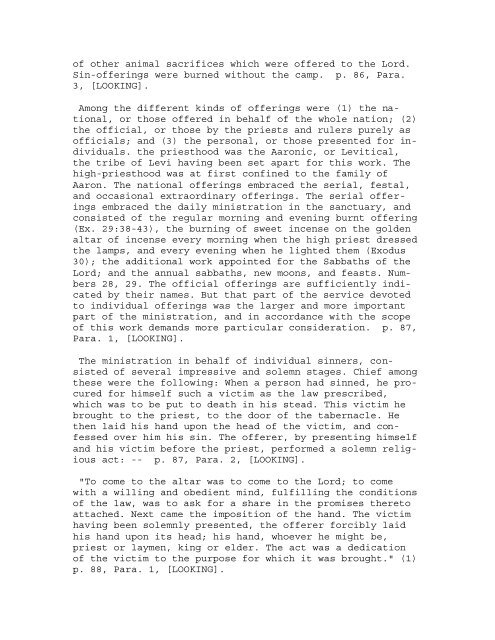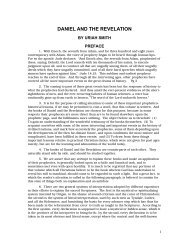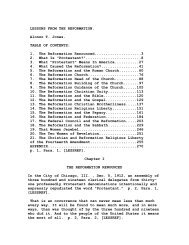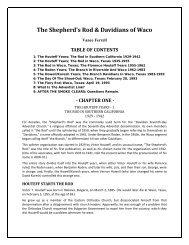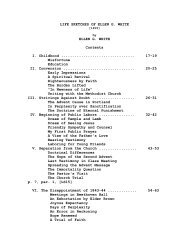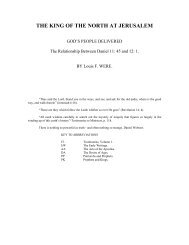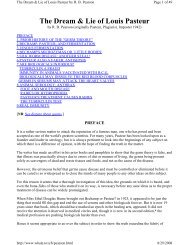LOOKING UNTO JESUS OR CHRIST IN TYPE AND ANTITYPE. BY ...
LOOKING UNTO JESUS OR CHRIST IN TYPE AND ANTITYPE. BY ...
LOOKING UNTO JESUS OR CHRIST IN TYPE AND ANTITYPE. BY ...
Create successful ePaper yourself
Turn your PDF publications into a flip-book with our unique Google optimized e-Paper software.
of other animal sacrifices which were offered to the Lord.<br />
Sin-offerings were burned without the camp. p. 86, Para.<br />
3, [<strong>LOOK<strong>IN</strong>G</strong>].<br />
Among the different kinds of offerings were (1) the national,<br />
or those offered in behalf of the whole nation; (2)<br />
the official, or those by the priests and rulers purely as<br />
officials; and (3) the personal, or those presented for individuals.<br />
the priesthood was the Aaronic, or Levitical,<br />
the tribe of Levi having been set apart for this work. The<br />
high-priesthood was at first confined to the family of<br />
Aaron. The national offerings embraced the serial, festal,<br />
and occasional extraordinary offerings. The serial offerings<br />
embraced the daily ministration in the sanctuary, and<br />
consisted of the regular morning and evening burnt offering<br />
(Ex. 29:38-43), the burning of sweet incense on the golden<br />
altar of incense every morning when the high priest dressed<br />
the lamps, and every evening when he lighted them (Exodus<br />
30); the additional work appointed for the Sabbaths of the<br />
Lord; and the annual sabbaths, new moons, and feasts. Numbers<br />
28, 29. The official offerings are sufficiently indicated<br />
by their names. But that part of the service devoted<br />
to individual offerings was the larger and more important<br />
part of the ministration, and in accordance with the scope<br />
of this work demands more particular consideration. p. 87,<br />
Para. 1, [<strong>LOOK<strong>IN</strong>G</strong>].<br />
The ministration in behalf of individual sinners, consisted<br />
of several impressive and solemn stages. Chief among<br />
these were the following: When a person had sinned, he procured<br />
for himself such a victim as the law prescribed,<br />
which was to be put to death in his stead. This victim he<br />
brought to the priest, to the door of the tabernacle. He<br />
then laid his hand upon the head of the victim, and confessed<br />
over him his sin. The offerer, by presenting himself<br />
and his victim before the priest, performed a solemn religious<br />
act: -- p. 87, Para. 2, [<strong>LOOK<strong>IN</strong>G</strong>].<br />
"To come to the altar was to come to the Lord; to come<br />
with a willing and obedient mind, fulfilling the conditions<br />
of the law, was to ask for a share in the promises thereto<br />
attached. Next came the imposition of the hand. The victim<br />
having been solemnly presented, the offerer forcibly laid<br />
his hand upon its head; his hand, whoever he might be,<br />
priest or laymen, king or elder. The act was a dedication<br />
of the victim to the purpose for which it was brought." (1)<br />
p. 88, Para. 1, [<strong>LOOK<strong>IN</strong>G</strong>].


